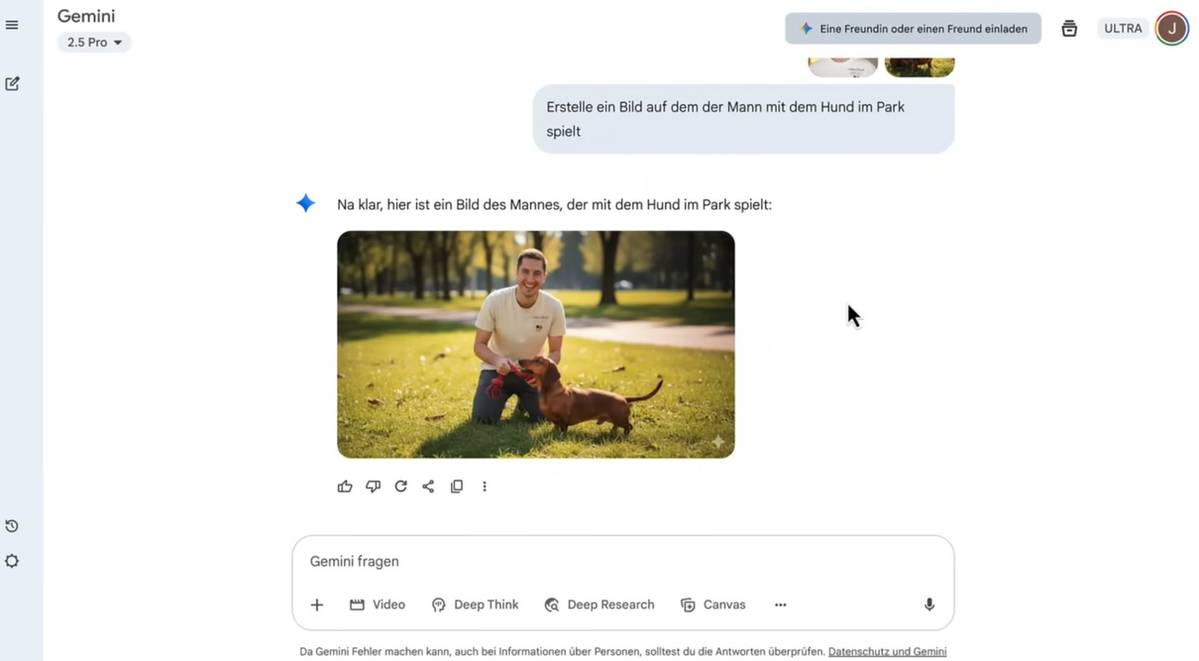Nano Banana: Google’s AI Image Tool Redefines the Rules
08.09.2025
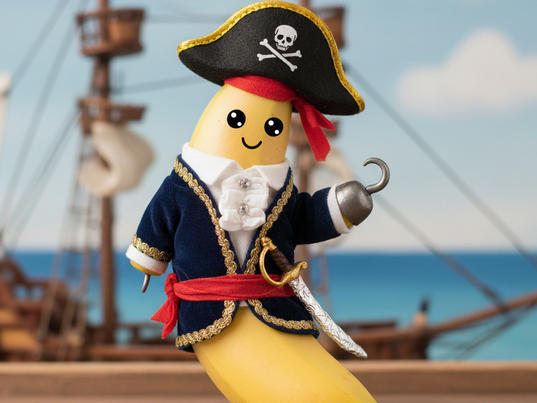
Google’s latest image generation and editing model, codenamed “Nano Banana” (officially part of Gemini 2.5 Flash Image), stands out from other AI image tools such as DALL·E 3 or MidJourney through a set of innovative features. What makes Nano Banana unique is its ability to perform context-aware, dialogue-driven image editing that goes far beyond simple picture generation.
Iterative Image Editing
One key differentiator is multi-step, text-based editing. Users can upload an existing image and instruct the AI in natural language to make specific changes. This process can be iterative—almost like a conversation. For example, you can change the background, adjust clothing, add or remove objects. Throughout these edits, the AI preserves essential details and the consistency of the person or object. Competing tools often require generating an entirely new image or struggle to maintain visual accuracy across edits.
When editing with Nano Banana, clothing, framing, shadows, and background details remain consistent. By contrast, DALL·E 3 tends to create similar—but not identical—images with subtle variations.
1. Prompt: A photorealistic image of a young Asian woman wearing a pink tiered sundress, standing in front of a vibrant pink bougainvillea wall. The scene should be cohesive and sunlit, with no other elements like separate blocks of dresses or backgrounds visible.
2. Prompt (to modify the image): The woman shall be in the Arabesque body position known from ballet.
Gemini

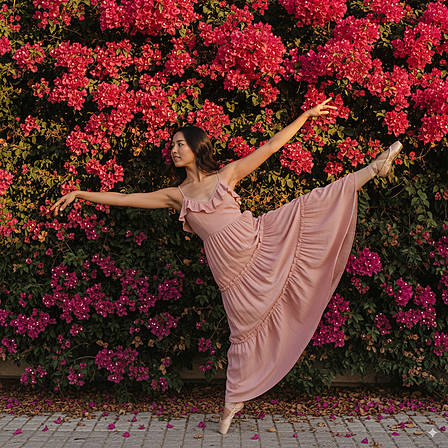


DALL-E 3 (ChatGPT)
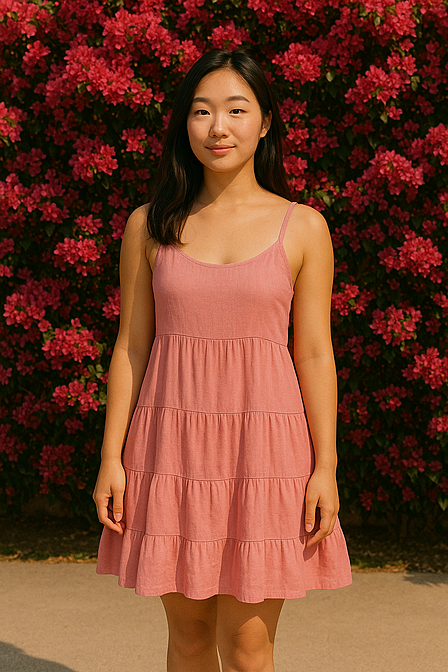
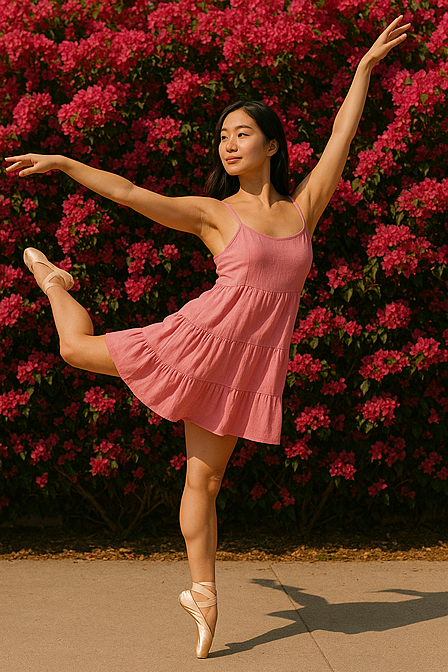


Image Fusion
Another outstanding feature is image fusion. Nano Banana makes it possible to seamlessly merge multiple images into a new composition. For example, a person from one photo and a pet from another can be placed into an entirely new environment, with the AI ensuring realistic integration. The consistency of characters and details is another significant advantage. While many AI image generators struggle to maintain the appearance of a person or object across repeated generations, Nano Banana excels at preserving traits even when extensive changes are made to the image. This is particularly valuable for creating image series or for professional applications in advertising and design.
Examples of image fusion with Nano Banana
With Nano Banana, it is, for instance, easy to first generate separate images of a smartphone and a horse and then combine them. The prompt: Combine the images. The phone should be placed horizontally and still display the apps. The horse should gallop across the phone.
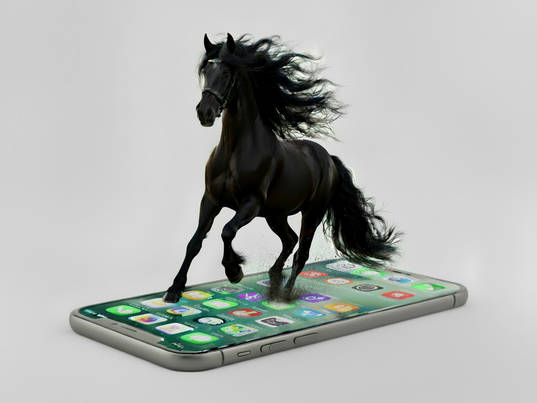
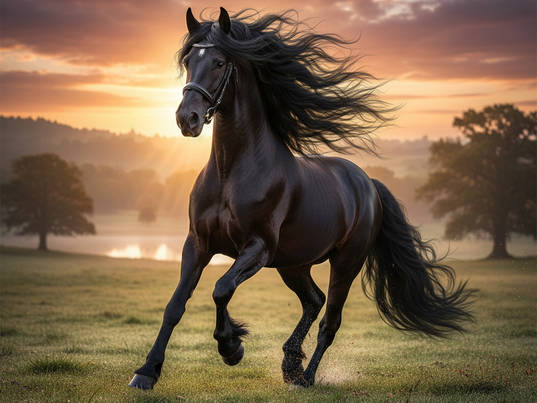
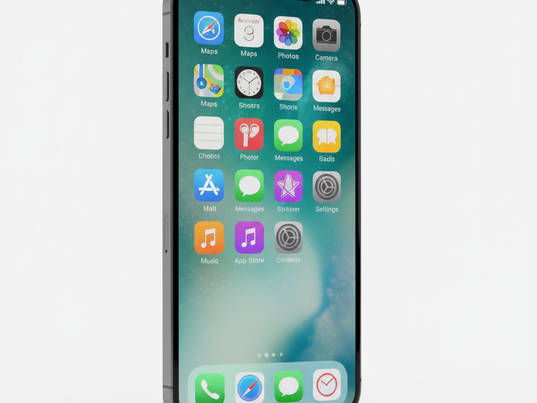



It is also effortless to insert a realistic racing car into a race set in the middle of a fantasy world. The prompt: Add the racing car as a race participant in the race. The racing car shall be of the same size as the other cars and clearly visible. There shall not be any crash or overlapping of the racing car and other cars.
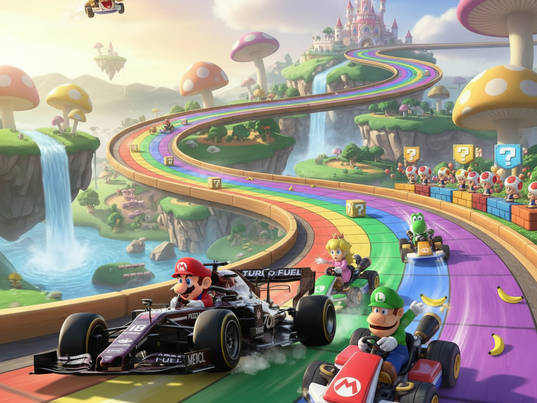
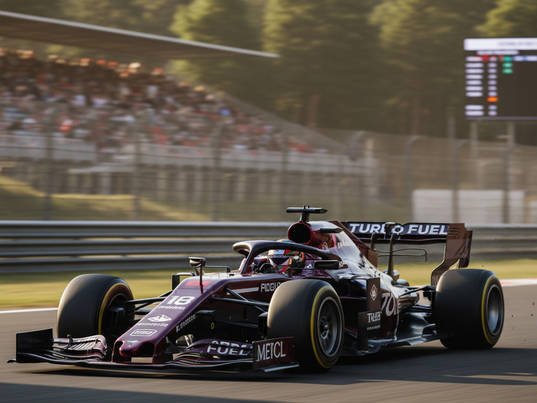
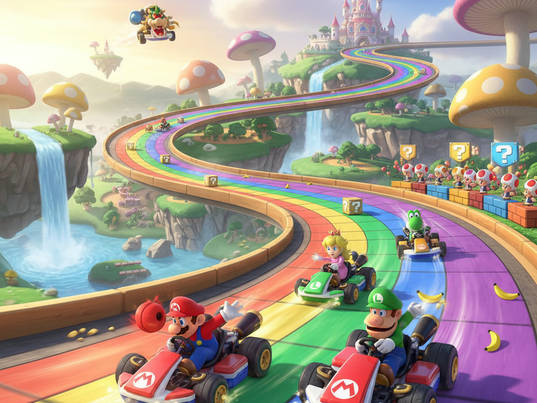



Conclusion
In addition, speed and free availability are mentioned as major advantages. Nano Banana can often deliver images and edits within just a few seconds and is freely accessible to end users in tools like the Gemini app.
In summary, Nano Banana shifts the focus from pure image generation to intuitive and powerful image editing in dialogue with the AI. The combination of precise, multi-step editing, image fusion, high consistency, and ease of use makes it a particularly versatile tool that opens up new possibilities for both creative amateurs and professional users.
Here is a video that demonstrates Nano Banana’s capabilities:



